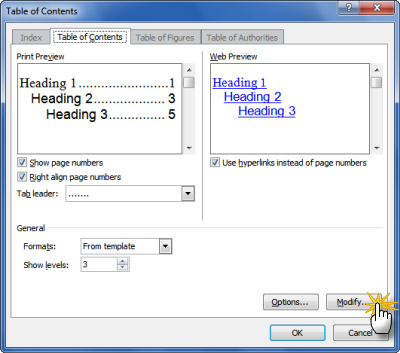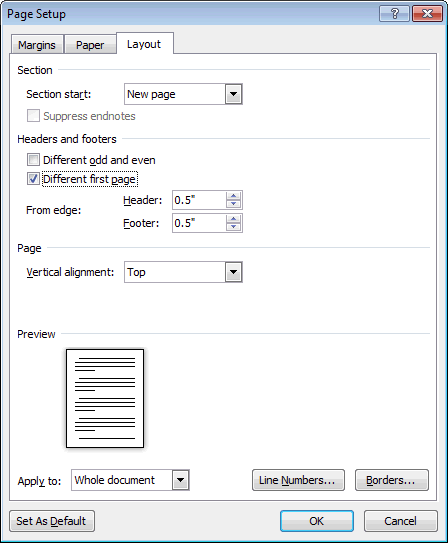
Regards Please mark helpful or answered as appropriate to help other users. You can ask for more help by replying to this post (Reply button below). Please let me know if you have any more questions or require further help.

This forum is a user-to-user support forum. You can have more than one section on a single page. Is a structure that holds formatting of the page layout including headers/footers, margins, layout and columns.

#How to change header for different pages in word 2007 how to#
This article explains how to add a different header or footer to the first page of your Word document or remove it from the first page altogether. it is not the same as a logical section like a chapter, although many users have each chapter as a separate Word section. To change first page: Do above, and then Header & Footer > Header or Footer > select a format (optional) > type your new header/footer. * When talking about Word documents, the term "section" is jargon for a particular part of a document. Here is my recap of how these settings work together. Again, thereĪre six settings for each section. Six settings for link to previous, one for each header and each footer in that section. When a new section is created, all of its headers and footers will be linked to those in the previous section. If you have multiple sections, in each section each header and footer can be linked to the previous section's similar header/footer or not. Primary header-footer set is then displayed on odd-numbered pages. Changing it in one section, changes it for all. Again, it applies to both headers and footers it activates display of this separate set of headers and footers on even-numbered pages. The setting for different odd and even is for the entire document. It can be changed in the header/footer tools tab for that section. If a new section is created it will use the same setting for this as was in use in the previous section by default. The setting or Different first Page is a setting in each section. Each header/footer set is independent of the others in the section.Ī single page can have multiple sections, each with its own three sets of headers and footers. Those will be present in each section, even if you do not have them activated or set. (triggered by the different odd and even setting) (triggered by the different-first-page setting)

More (than you may want or need to know):Įach section will have three sets of headers and footers: Page numbers are fields that are in headers or footers. If you need a particular format, go to the footer on page 2, copy that page number and paste it into 's footer. To insert the page number on the first page, you can edit the footer on that page and pressĪlt+Shift+P for your page number. TheseĪre separate headers and footers from the primary ones, the ones that continue on the other pages. The setting " Different First Page " is section * setting that applies to both the header and the footer as a set. If you want a page number on the first page but no header, you need to put the page number there as well. Thus, this new section can include the page number in the header or footer, and the previous section can omit it.You can stop being stressed over this. Remember, as well, that headers and footers can vary by section of your document. For most people this means changing the header or footer to include the page number. Click on OK to close the Page Number Format dialog box.Īt this point you can add your page numbers as you normally would.In the Page Numbering area of the dialog box (at the bottom), click on the Start At radio button and indicate the starting page number for the section.

Word displays the Page Number Format dialog box. With your insertion point located on the third physical page (in other words, right after the section break you added), click Page Number in the Header & Footer group, and then click Format Page Numbers.The section break appears in your document, and the text following the break will begin at the top of a new page. In the Page Setup group, click Breaks and then click Next Page.Position the insertion point at the end of the second physical page in your document.Thus, to change the way in which pages are numbered in the previous scenario, you would perform the following steps: Page numbering can be varied by section in your document. For instance, your document may include a couple pages of preliminary information, but you want the actual page numbering to start on the third physical page. There may be times when you want to change the starting page number for a particular part of your document. Word gives you quite a bit of flexibility in working with page numbers.


 0 kommentar(er)
0 kommentar(er)
